Cover
Title Page
Copyright Page
Contents
Preface
Acknowledgments
1. Statistics for Spatial Data
1.1 Spatial Data and Spatial Models
1.2 Introductory Examples
1.2.1 Geostatistical Data
1.2.2 Lattice Data
1.2.3 Point Patterns
1.3 Statistics for Spatial Data: Why?
PART I GEOSTATISTICAL DATA
2. Geostatistics
2.1 Continuous Spatial Index
2.2 Spatial Data Analysis of Coal Ash in Pennsylvania
2.2.1 Intrinsic Stationarity
2.2.2 Square-Root-Differences Cloud
2.2.3 The Pocket Plot
2.2.4 Decomposing the Data into Large- and Small-Scale Variation
2.2.5 Analysis of Residuals
2.2.6 Variogram of Residuals from Median Polish
2.3 Stationary Processes
2.3.1 Variogram
2.3.2 Covariogram and Correlogram
2.4 Estimation of the Variogram
2.4.1 Comparison of Variogram and Covariogram Estimation
2.4.2 Exact Distribution Theory for the Variogram Estimator
2.4.3 Robust Estimation of the Variogram
2.5 Spectral Representations
2.5.1 Valid Covariograms
2.5.2 Valid Variograms
2.6 Variogram Model Fitting
2.6.1 Criteria for Fitting a Variogram Model
2.6.2 Least Squares
2.6.3 Properties of Variogram-Parameter Estimators
2.6.4 Cross-Validating the Fitted Variogram
3. Spatial Prediction and Kriging
3.1 Scale of Variation
3.2 Ordinary Kriging
3.2.1 Effect of Variogram Parameters on Kriging
3.2.2 Lognormal and Trans-Gaussian Kriging
3.2.3 Cokriging
3.2.4 Some Final Remarks
3.3 Robust Kriging
3.4 Universal Kriging
3.4.1 Universal Kriging of Coal-Ash Data
3.4.2 Trend-Surface Prediction
3.4.3 Estimating the Variogram for Universal Kriging
3.4.4 Bayesian Kriging
3.4.5 Kriging Revisited
3.5 Median-Polish Kriging
3.5.1 Gridded Data
3.5.2 Nongridded Data
3.5.3 Median Polishing Spatial Data: Inference Results
3.5.4 Median-Based Covariogram Estimators are Less Biased
3.6 Geostatistical Data Simulated and Real
3.6.1 Simulation of Spatial Processes
3.6.2 Conditional Simulation
3.6.3 Geostatistical Data
4. Applications of Geostatistics
4.1 Wolfcamp-Aquifer Data
4.1.1 Intrinsic-Stationarity Assumption
4.1.2 Nonconstant-Mean Assumption
4.2 Soil–Water Tension Data
4.3 Soil–Water-Infiltration Data
4.3.1 Estimating and Modeling the Spatial Dependence
4.3.2 Inference on Mean Effects (Spatial Analysis of Variance)
4.4 Sudden-Infant-Death-Syndrome Data
4.5 Wheat-Yield Data
4.5.1 Presence of Trend in the Data
4.5.2 Intrinsic Stationarity
4.5.3 Median-Polish (Robust) Kriging
4.6 Acid-Deposition Data
4.6.1 Spatial Modeling and Prediction
4.6.2 Sampling Design
4.7 Space–Time Geostatistical Data
5. Special Topics in Statistics for Spatial Data
5.1 Nonlinear Geostatistics
5.2 Change of Support
5.3 Stability of the Geostatistical Method
5.3.1 Estimation of Spatial-Dependence Parameters
5.3.2 Stability of the Kriging Predictor
5.3.3 Stability of the Kriging Variance
5.4 Intrinsic Random Functions of Order k
5.5 Applications of the Theory of Random Processes
5.6 Spatial Design
5.6.1 Spatial Sampling Design
5.6.2 Spatial Experimental Design
5.7 Field Trials
5.7.1 Nearest-Neighbor Analyses
5.7.2 Analyses Based on Spatial Modeling
5.8 Infill Asymptotics
5.9 The Many Faces of Spatial Prediction
5.9.1 Stochastic Methods of Spatial Prediction
5.9.2 Nonstochastic Methods of Spatial Prediction
5.9.3 Comparisons and Some Final Remarks
PART II LATTICE DATA
6. Spatial Models on Lattices
6.1 Lattices
6.2 Spatial Data Analysis of Sudden Infant Deaths in North Carolina
6.2.1 Nonspatial Data Analysis
6.2.2 Spatial Data Analysis
6.2.3 Trend Removal
6.2.4 Some Final Remarks
6.3 Conditionally and Simultaneously Specified Spatial Gaussian Models
6.3.1 Simultaneously Specified Spatial Gaussian Models
6.3.2 Conditionally Specified Spatial Gaussian Models
6.3.3 Comparison
6.4 Markov Random Fields
6.4.1 Neighbors Cliques and the Negpotential Function Q
6.4.2 Pairwise-Only Dependence and Conditional Exponential Distributions
6.4.3 Some Final Remarks
6.5 Conditionally Specified Spatial Models for Discrete Data
6.5.1 Binary Data
6.5.2 Counts Data
6.6 Conditionally Specified Spatial Models for Continuous Data
6.7 Simultaneously Specified and Other Spatial Models
6.7.1 Simultaneously Specified Spatial Models
6.7.2 Other Spatial Models
6.8 Space–Time Models
7. Inference for Lattice Models
7.1 Inference for the Mercer and Hall Wheat-Yield Data
7.1.1 Data Description
7.1.2 Spatial Lattice Models
7.2 Parameter Estimation for Lattice Models
7.2.1 Estimation Criteria
7.2.2 Gaussian Maximum Likelihood Estimation
7.2.3 Some Computational Details
7.3 Properties of Estimators
7.3.1 Increasing-Domain Asymptotics
7.3.2 The Jackknife and Bootstrap for Spatial Lattice Data
7.3.3 Cross-Validation and Model Selection
7.4 Statistical Image Analysis and Remote Sensing
7.4.1 Remote Sensing
7.4.2 Ordinary Discriminant Analysis
7.4.3 Markov-Random-Field Models
7.4.4 Edge Processes
7.4.5 Textured Images
7.4.6 Single Photon Emission Tomography
7.4.7 Leas Squares and Image Regularization
7.4.8 Method of Sieves
7.4.9 Mathematical Morphology
7.5 Regional Mapping Scotland Lip-Cancer Data
7.5.1 Exploratory Regional Mapping
7.5.2 Parametric Empirical Bayes Mapping
7.6 Sudden-Infant-Death-Syndrome Data
7.6.1 Exploratory Spatial Data Analysis
7.6.2 Auto-Poisson Model
7.6.3 Auto-Gaussian Model
7.7 Lattice Data Simulated and Real
7.7.1 Simulation of Lattice Processes
7.7.2 Lattice Data
PART III SPATIAL PATTERNS
8. Spatial Point Patterns
8.1 Random Spatial Index
8.2 Spatial Data Analysis of Longlea Pines (Pinus palustris)
8.2.1 Data Description
8.2.2 Complete Spatial Randomness Regularity, and Clustering
8.2.3 Quadra Methods
8.2.4 Kernel Estimators of the Intensity Function
8.2.5 Distance Methods
8.2.6 Nearest-Neighbor Distribution Functions and the K Function
8.2.7 Some Final Remarks
8.3 Point Process Theory
8.3.1 Moment Measures
8.3.2 Generating Functionals
8.3.3 Stationary and Isotropic Point Processes
8.3.4 Palm Distributions
8.3.5 Reduced Second Moment Measure
8.4 Complete Spatial Randomness Distance Functions, and Second Moment Measures
8.4.1 Complete Spatial Randomness
8.4.2 Distance Functions
8.4.3 K Functions
8.4.4 Animal-Behavior Data
8.4.5 Some Final Remarks
8.5 Models and Model Fitting
8.5.1 Inhomogeneous Poisson Process
8.5.2 Cox Process
8.5.3 Poisson Cluster Process
8.5.4 Simple Inhibition Point Processes
8.5.5 Markov Point Process
8.5.6 Thinned and Related Point Processes
8.5.7 Other Models
8.5.8 Some Final Remarks
8.6 Multivariate Spatial Point Processes
8.6.1 Theoretical Considerations
8.6.2 Estimation of the Cross K Function
8.6.3 Bivariate Spatial–Point-Process Models
8.7 Marked Spatial Point Processes
8.7.1 Theoretical Considerations
8.7.2 Estimation of Moment Measures
8.7.3 Marked Spatial–Point-Process Models
8.8 Space–Time Point Patterns
8.9 Spatial Point Patterns Simulated and Real
8.9.1 Simulation of Spatial Point Patterns
8.9.2 Spatial Point Patterns
9. Modeling Objects
9.1 Set Models
9.1.1 Fractal Sets
9.1.2 Fuzzy Sets
9.1.3 Random Closed Sets: An Example
9.2 Random Parallelograms in R2
9.3 Random Closed Sets and Mathematical Morphology
9.3.1 Theory and Methods
9.3.2 Inference on Random Closed Sets
9.4 The Boolean Model
9.4.1 Main Properties
9.4.2 Generalizations of the Boolean Model
9.5 Methods of Boolean-Model Parameter Estimation
9.5.1 Analysis of Random-Parallelograms Data
9.5.2 Analysis of Heather-Incidence Data
9.5.3 Intensity Estimation in the Boolean Model
9.6 Inference for the Boolean Model
9.7 Modeling Growth with Random Sets
9.7.1 Random-Se Growth Models
9.7.2 Tumor-Growth Data
9.7.3 Fitting the Tumor-Growth Parameters
References
Author Index
Subjec Index
EULA
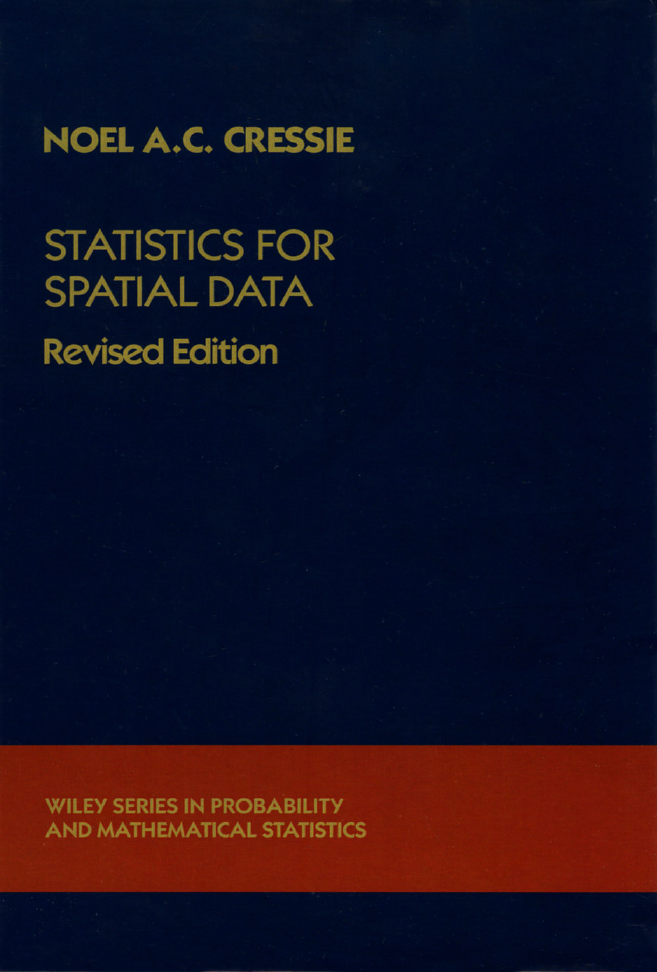

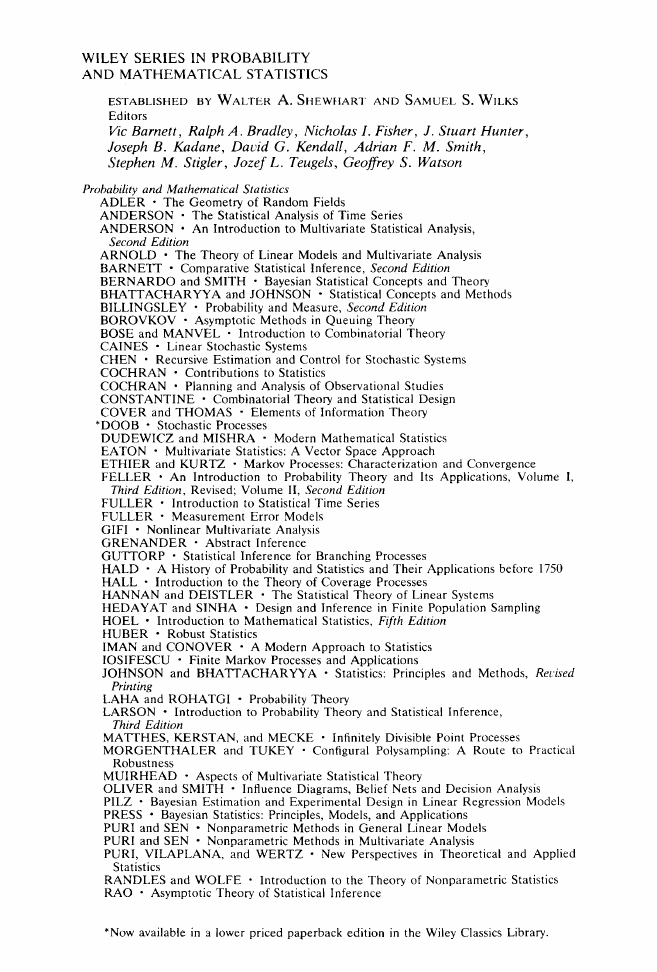
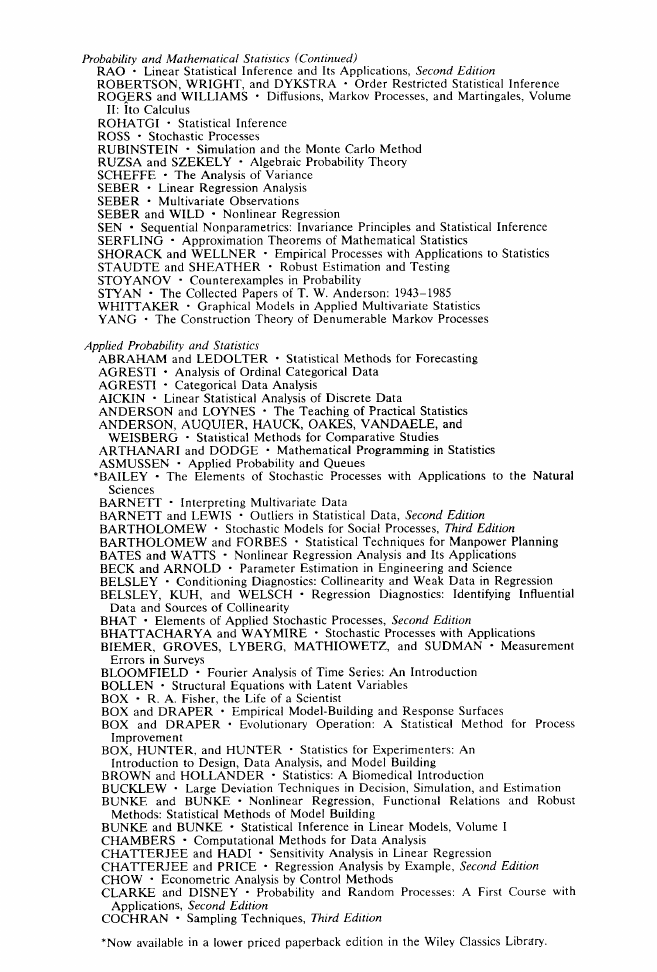
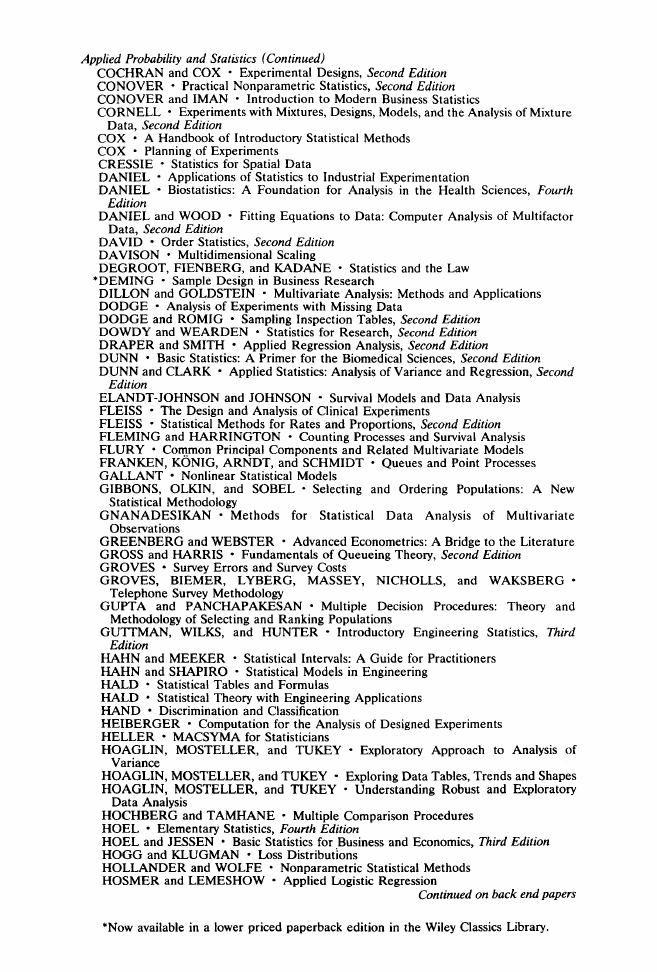
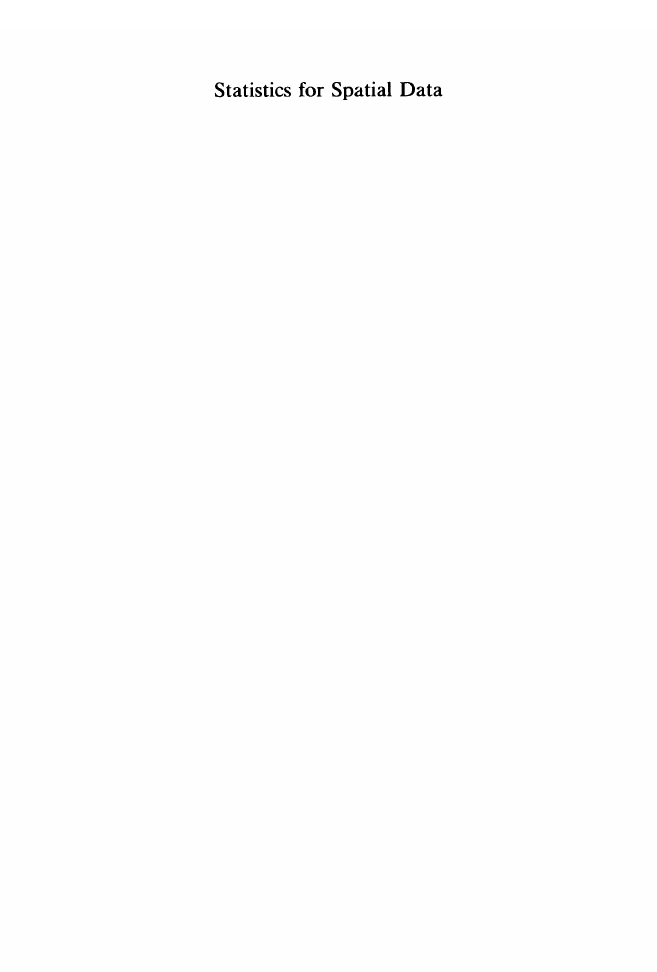

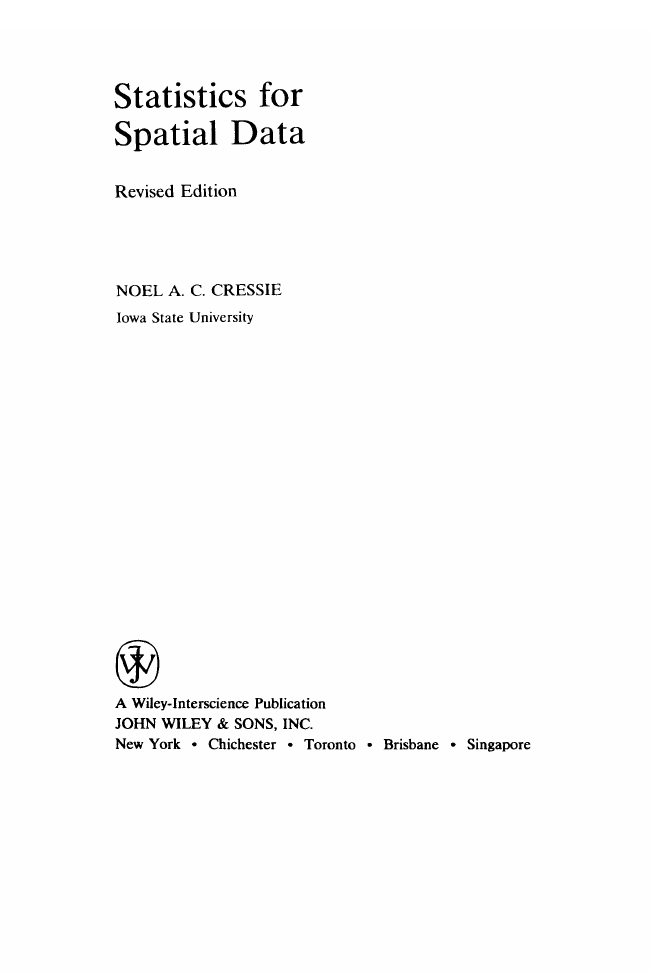








 2023年江西萍乡中考道德与法治真题及答案.doc
2023年江西萍乡中考道德与法治真题及答案.doc 2012年重庆南川中考生物真题及答案.doc
2012年重庆南川中考生物真题及答案.doc 2013年江西师范大学地理学综合及文艺理论基础考研真题.doc
2013年江西师范大学地理学综合及文艺理论基础考研真题.doc 2020年四川甘孜小升初语文真题及答案I卷.doc
2020年四川甘孜小升初语文真题及答案I卷.doc 2020年注册岩土工程师专业基础考试真题及答案.doc
2020年注册岩土工程师专业基础考试真题及答案.doc 2023-2024学年福建省厦门市九年级上学期数学月考试题及答案.doc
2023-2024学年福建省厦门市九年级上学期数学月考试题及答案.doc 2021-2022学年辽宁省沈阳市大东区九年级上学期语文期末试题及答案.doc
2021-2022学年辽宁省沈阳市大东区九年级上学期语文期末试题及答案.doc 2022-2023学年北京东城区初三第一学期物理期末试卷及答案.doc
2022-2023学年北京东城区初三第一学期物理期末试卷及答案.doc 2018上半年江西教师资格初中地理学科知识与教学能力真题及答案.doc
2018上半年江西教师资格初中地理学科知识与教学能力真题及答案.doc 2012年河北国家公务员申论考试真题及答案-省级.doc
2012年河北国家公务员申论考试真题及答案-省级.doc 2020-2021学年江苏省扬州市江都区邵樊片九年级上学期数学第一次质量检测试题及答案.doc
2020-2021学年江苏省扬州市江都区邵樊片九年级上学期数学第一次质量检测试题及答案.doc 2022下半年黑龙江教师资格证中学综合素质真题及答案.doc
2022下半年黑龙江教师资格证中学综合素质真题及答案.doc